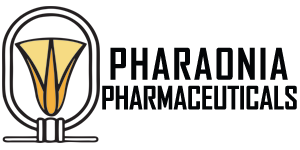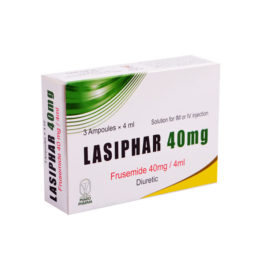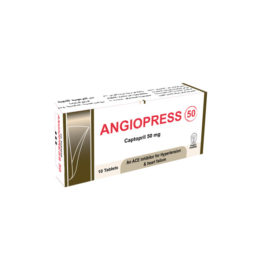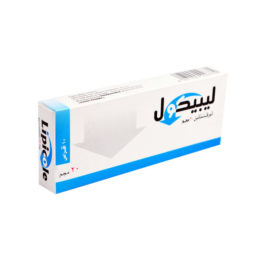Description
Therapeutic indications
The relief of the symptoms of nausea and vomiting.
Posology and method of administration
– It is recommended to take oral Domi-gest before meals. If taken after meals, absorption of the drug is somewhat delayed.
Adults and adolescents (over 12 years and weighing 35 kg or more):-
– 1 sachet (containing domperidone 10 mg per sachet) three times per day.
– This medicine shouldn’t normally be used for longer than one week.
Contraindications
• Domi-gest is contraindicated in the following situations:
– Known hypersensitivity to domperidone or any of the excipients.
– Prolactin-releasing pituitary tumour (prolactinoma).
• Domi-gest should not be used when stimulation of the gastric motility could be harmful:
– Gastro-intestinal haemorrhage, mechanical obstruction or perforation.
Special warnings and special precautions for use
• The use of domperidone may be associated with an increased risk of serious ventricular arrhythmias or sudden cardiac death, particularly in patients taking daily doses greater than 30mg, and in patients older than 60 years of age. It must not be given to patients who have existing abnormalities of electrical activity in the heart or heart rhythm or who are at increased risk of such effects.
• Should not be used with other medicines that have similar effects on the heart or reduce the breakdown of domperidone in the body (thus increasing the risk of side effects).
Use during lactation
The total amount of domperidone excreted in humanbreast milk is expected to be less than 7μg per
day at the highest recommended dosing regimen. It is not known whether this is harmful to the newborn. Therefore breast-feeding is not recommended for mothers who are taking Domi-gest.
Use in liver disorders:
Since domperidone is highly metabolised in the liver, Domi-gest should be not be used in patients with moderate or severe hepatic impairment.
Renal insufficiency:
In patients with severe renal insufficiency (serum creatinine > 6 mg/100 mL, i.e. > 0.6 m mol/L) the
elimination half-life of domperidone was increased from 7.4 to 20.8 hours. Since very little unchanged drug is excreted via the kidneys, it is unlikely that the dose of a single administration needs to be adjusted in patients with renal
insufficiency. However, on repeated administration,the dosing frequency should be reduced to once
or twice daily depending on the severity of the impairment, and the dose may need to be reduced.
Such patients on prolonged therapy should be reviewed regularly.
Interaction with other medicinal products and other forms of interaction
The main metabolic pathway of domperidone is through CYP3A4. In vitrodata suggest that the
concomitant use of drugs that significantly inhibit this enzyme may result in increased plasma levels of domperidone. In vivointeraction studies with ketoconazole revealed a marked inhibition of
domperidone’s CYP3A4 mediated first pass metabolism by ketoconazole, erythromycin or other potent CYP3A4 inhibitors which prolong QTc interval such as fluconazole, voriconazole, clarithromycin and amiodarone.
Pregnancy and lactation
– Domi-gest should only be used during pregnancy when justified by the anticipated therapeutic benefit.
– Breast-feeding is not recommended for mothers who are taking Domi-gest.
Effects on ability to drive and use machines
Domi-gest has no or negligible influence on the ability to drive and use machines.
Undesirable effects
• Immune System Disorder: Very rare;Allergic reaction
• Endocrine disorder:Rare; increased prolactin levels
• Nervous system disorders:Very rare; extrapyramidal side effects
• Gastrointestinal disorders:Rare; gastro-intestinal disorders,including very rare transient intestinal cramps
• Skin and subcutaneous tissue disorders:Very rare; urticaria
• Reproductive system and breast disorders: Rare; galactorrhoea, gynaecomastia, amenorrhea
As the hypophysis is outside the blood brain barrier, domperidone may cause an increase in prolactin levels. In rare cases this hyperprolactinaemia may lead to neuro-endocrinological side effects such as galactorrhoea, gynaecomastia and amenorrhoea.
Extrapyramidal side effects are very rare in neonates and infants, and exceptional in adults. These side effects reverse spontaneously and completely as soon as the treatment is stopped.
Overdose
Symptoms
Symptoms of overdosage may include drowsiness,disorientation and extrapyramidal reactions,
especially in children.
Treatment
There is no specific antidote to domperidone, but in the event of overdose, gastric lavage as well as the administration of activated charcoal, may be useful. Close medical supervision and supportive therapy is recommended. Anticholinergic, anti-parkinson drugs may be helpful in controlling the extrapyramidal reactions.
Pharmacodynamic properties:
Pharmacotherapeutic group: Propulsives.
Domperidone is a dopamine antagonist with anti-emetic properties, Domperidone does not readily cross the blood-brain barrier. In Domperidone users, especially in adults, extra pyramidal side effects are very rare, but Domperidone promotes the release of prolactin from the pituitary. Its anti-emetic effect may be due to a combination of peripheral (gastrokinetic) effects and antagonism of dopamine receptors in the chemoreceptor trigger zone, which lies outside the blood-brain barrier in the area postrema.
Pharmacokinetic properties
Absorption
In fasting subjects, Domperidone is rapidly absorbed after oral administration, with peak plasma concentration at 30 to 60 minutes. The low absolute bioavailability of oral Domperidone (approximately 15%) is due to an extensive first-pass metabolism in the gut wall and liver. Although Domperidone’s bioavailability is enhanced in normal subjects when taken after a meal, patients with gastro-intestinal complaints should take Dompridone 15-30 minutes before a meal. Reducted gastric acidity impairs the absorption of Domperidone. Oral bioavailability is decrease by prior concomitant administration of cimetidine and sodium bicarbonate. The time of peak absorption is slightly delayed and the AUC somewhat increased when the oral drug is taken after a meal.
Distribution
Oral Domperidone does not appear to accumulate or induce its own metabolism; a peak plasma level after 90 minutes of 21ng/ml after two weeks oral administration of 30 mg per day was almost the same as that of 18 ng/ml after the dose. Domperidone is 91-93% bound to plasma proteins.
Metabolism
Domperidone undergoes rapid and extensive hepatic metabolism by hydroxylation and N-dealkylation. In vitro metabolism experiments with diagnostic inhibitors revealed that CYP3A4 is a major form of cytochrome P-450 involved in the N-dealkylation of Domperione, whereas CYP3A4, CYP1A2 and CYP2E1 are involved in Domperidone aromatic hydroxylation.
Excretion
Urinary and faecal excretion amount to 31 and 66% the oral dose respectively. The proportion of the drug excreted unchanged is small (10% of faecal excretion and approximately 1% of urinary excretion). The plasma half-life after a single oral dose is 7-9 hours in healthy subjects but is prolonged in patients with severe renal insufficiency.
PACKING: A carton box containing 6 sachets of effervescent granules, each of 5 gm and a pamphlet.
STORAGE:
Keep at a temperature not exceeding 30C, in dry place.
Keep out of reach of children.









Reviews
There are no reviews yet.